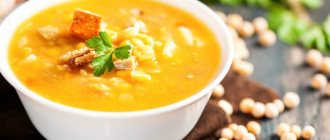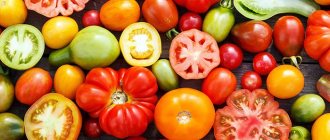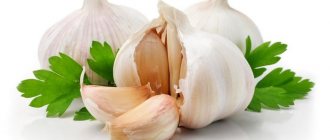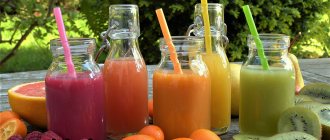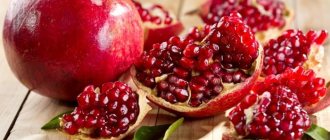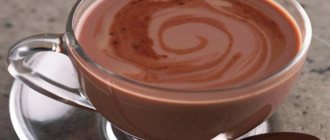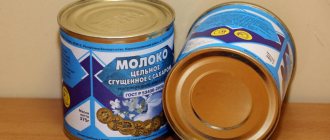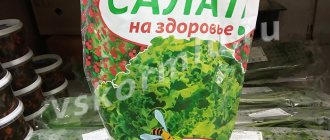There is nothing tastier and healthier in the world than pea soup.
The basis for preparing this soup is peas, and they are a source of essential amino acids. They are represented in this product by lysine and cystine. With the participation of cystine, the body produces the hormone oxytocin. For a nursing mother, it is extremely important because it ensures the production of breast milk. Thanks to the presence of lysine in the body, the fight against viral microbes is carried out. This allows the nursing mother to resist herpes and respiratory infections.
In addition, with the help of lysine, the absorption of calcium from the blood and its delivery to bone structures is improved. During lactation, many women experience calcium deficiency. In this case, lysine acts as an excellent prophylactic agent, insuring against the occurrence of a condition associated with osteoporosis.
It should also be noted that peas contain high levels of pyridoxine (vitamin B6). It is an assistant in the breakdown of amino acids. But their education will not take place without his participation. If it is insufficient, phenomena associated with dermatitis may occur. Sometimes the occurrence of convulsive conditions can be noted. Microelements perform various functions in the body, and selenium is considered a longevity mineral. This element is extremely important for the body, as it performs a number of necessary functions:
- The mineral leads to increased immunity.
- Shows pronounced antioxidant properties. Thanks to this, the formation of free radicals, which have a destructive effect at the intracellular level, is inhibited.
- The possibility of the appearance and development of heart pathology is significantly reduced.
- Uncontrolled cell division, which can be observed in various malignant neoplasms, is inhibited.
- Under the influence of selenium, all processes associated with metabolism are accelerated.
- The mineral helps fight intoxication. By taking selenium supplements, you can solve the problem associated with infertility.
- The functioning of nerve structures and endocrine glands is normalized.
- Under the influence of selenium, inflammation processes become less intense.
- The intake of this element into the body can improve the condition of the skin, nails, and hair.
Peas contain a sufficient amount of this trace element. All of the above circumstances allow us to say without the slightest shadow of doubt that pea soup is useful not only for a nursing mother, but also for her child.
Useful properties of peas
It is no coincidence that legumes are included in the diet of people who fast and adhere to the principles of vegetarian nutrition, as well as all those who need protein food.
Peas contain proteins containing a number of essential amino acids:
- Lysine. An amino acid with antiviral properties helps the body fight respiratory diseases and herpes. Lysine improves the absorption of calcium and its transport to bone tissue. This is especially true for women after pregnancy, during which calcium was washed out of the bones and used to build the baby’s skeleton.
- Cysteine. Lactation largely depends on the production of oxytocin by the female body. The synthesis of this hormone is impossible without the participation of disulfide cystine bridges, so pea dishes help stimulate milk production. Read about other foods that increase the fat content of milk here.
- Tryptophan. Actively participates in the brain's production of joy hormones. A lack of tryptophan results in loss of energy, bad mood, and headaches. Tryptophan is necessary for regulating the endocrine system and is involved in the synthesis of proteins for muscles and the immune system.
- Methionine. Helps reduce the level of bad cholesterol in the blood, remove toxins and free radicals, normalize the functioning of the central nervous system, liver and other internal organs. Participates in the synthesis of compounds important for the body.
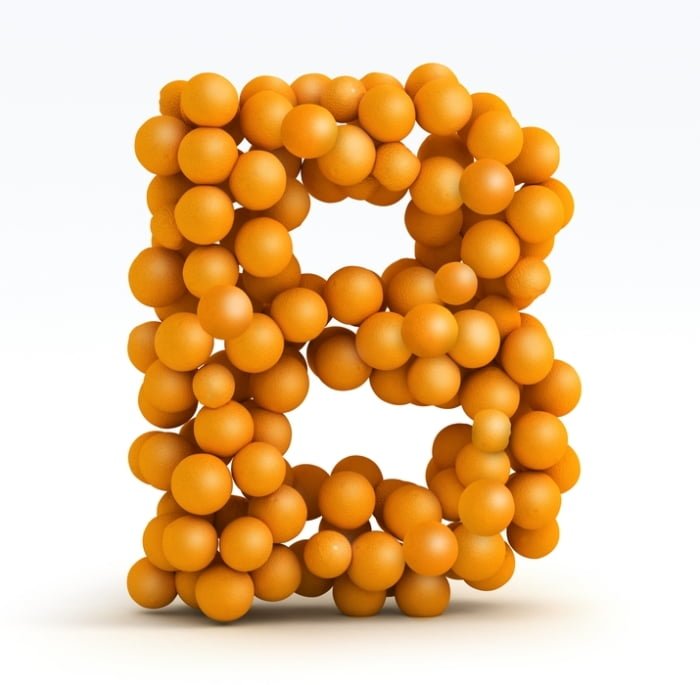
Peas contain a high content of fiber, starch, saturated fatty acids, sugars, as well as a whole complex of vitamins (beta-carotene, E, PP, H, B) and microelements, which include:
- potassium and sodium are electrolytes that regulate water balance at the cellular level;
- calcium, necessary for bone tissue and teeth;
- iron for the formation of red blood cells;
- phosphorus for brain function;
- iodine, which is important for the endocrine system and promotes the removal of heavy metals;
- selenium, which has anticarcinogenic properties.
This product is a supplier of magnesium, tin, strontium, zinc, manganese, molybdenum, chromium, strontium, silicon, nickel and other important trace elements.

Thanks to the presence of citric and oxalic acid, young peas remove sand from the kidneys. Fresh peas have antiseptic qualities, and dishes made from this product will help:
- cleanse the intestines of toxins and accumulated deposits;
- reduce bad cholesterol levels;
- normalize the functioning of the nervous system and brain;
- improve skin condition.
Contraindications to consuming peas are gout, acute nephritis, and cholecystitis.
Timing for introducing pea soup into the diet
Many pediatricians allow a nursing mother to introduce this dish into her diet when the child’s age exceeds 1 month. But this fact is subject to significant doubts by other pediatric doctors. Their arguments are that the infant’s digestive tract is still far from perfect, and such experiments are not worth conducting. All components contained in peas will be passed on to the baby along with breast milk. There may be problems with their absorption.
This is fully determined by the state of the body's enzyme system. At this age, the baby has not yet developed it. You'll probably have to wait a little longer with this dish. This will be the most reasonable decision. The best option for a nursing mother would be to introduce pea soup into her diet by the end of the third month of her baby’s life.
Rules for introducing pea first course into the diet
Mom should start introducing pea soup into her menu in compliance with certain rules:
- A fairly small dose can serve as a starting point. Usually it amounts to a couple of spoons of soup or just a few peas. This is no longer possible, since it is unknown how the child will react to this. After this, the baby’s condition is closely monitored throughout the day.
- If no changes have occurred in the baby’s condition, then mommy can safely eat pea soup in small quantities. But you should not do this more often than twice a week.
When can a mother introduce peas into her diet?
Some pediatric therapists allow mothers during breastfeeding to introduce pea soup into their diet already in the 2nd month of the baby’s life.
But in most cases this is a very controversial point. The digestive system of a two-month-old baby is not yet ready for such experiments. The components that peas contain will be transferred to the baby through milk during breastfeeding. The process of assimilation can be either painful or, on the contrary, pass without flatulence. This depends on the degree of development of the baby’s enzymatic system. As a rule, at two months it is not yet sufficiently formed in the child. Only the baby’s individual reaction to the product will tell you the exact time. Therefore, it is best not to rush.
When can pea soup diversify the menu of a nursing mother? Not earlier than in the last ten days of the baby’s 3rd month of life.
How to enter it into the menu correctly?
There are several rules that the mother of a breastfed baby should follow so that pea soup does not cause harm:
- You can try peas for the first time starting with a single dose - a few boiled peas or a couple of spoons of soup. After this, you need to observe the baby’s reaction all day;
- If the child feels well after pea soup, a gentle version of this dish is introduced into the nursing mother’s menu, but no more than 2 times a week.
Prepare delicious pea soup for yourself
It is very easy to prepare using the recipe below. The dish turns out not only tasty, but also healthy, both for the mother herself and for her baby. For preparation you will need the following ingredients:
- Dried peas – 200 g.
- Chicken fillet (can be replaced with beef) – 250 g.
- One head of onion.
- Medium sized carrot.
- Potatoes – 5 medium tubers.
Greens are optional, and salt is in accordance with taste preferences, of course, in adequate quantities.
Algorithm of actions during the preparation process:
- Peas should be soaked in cold water overnight.
- In the morning, add 1.5 liters of cold water to the swollen peas.
- The pan with the contents is placed on low heat, where it remains for 2-3 hours. After this, the broth is drained.
- The meat is poured with cold water in a volume of two liters. It is necessary to cook until fully cooked. After this, the meat must be removed and cut into portions.
- Onions and carrots are peeled and chopped. Peeled potatoes are cut into cubes. Vegetables must be boiled in the prepared broth until they become soft in consistency. This will take approximately a third of an hour.
- To this composition are added cooked peas and an assortment of herbs. After this, the soup sits on the fire for another two minutes.
- The soup is cooled and blended with a blender until it has the consistency of puree. First, peas and vegetables are placed in the device’s container, and then the broth is poured.
- When serving, meat pieces are added to the soup.
In conclusion, I would like to say that if a woman is breastfeeding, then no one is going to deprive her of delicious pea soup. But mommy can start eating it only when her baby is almost three months old. In the absence of any manifestations from the child’s body, mommy can safely eat this dish. She will enjoy it, and her child will benefit.
Recipe for delicious pea soup for nursing mothers
You will need:
Preparation:
- Soak peas in cold water overnight;
- rinse thoroughly in running water and add 1.5 liters of cold water, put on fire and bring to a boil;
- after boiling, cook over low heat for 2–3 hours until soft, drain the resulting broth;
- pour chicken meat with 2 liters of cold water and cook the broth until the meat is ready, then remove the meat and cut into portions;
- after the meat has been removed, peel the onion and carrots, chop them into slices, cut the potatoes into cubes, cook all the vegetables in the broth for about 20 minutes until the potatoes are soft;
- add already cooked peas, salt to taste and herbs to the vegetables, cook the soup for another 2 minutes;
- Cool the soup prepared in this way and beat with a blender until pureed;
- It is recommended to first place the vegetables and peas into the blender with a slotted spoon, and then add the remaining broth in parts while blending;
- Cream of pea soup should be served with pieces of meat and crispy croutons.
Cereals and legumes are extremely beneficial foods for the human body. They improve the functioning of the gastrointestinal tract, cardiovascular system, and promote the removal of cholesterol. Dishes prepared from these products have high nutritional value.
Reference. Cereals and legumes are rich in fiber, contain vitamins B, C, A, E, and many useful microelements: iron, magnesium, phosphorus, potassium, calcium, selenium, etc. They must be present in the diet of a nursing woman.
When breastfeeding, you can eat the following types of cereals and legumes:
From the first days after childbirth, a nursing mother’s diet can include buckwheat and rice cereals, oatmeal and pearl barley. Decoctions of rice and pearl barley are especially useful in the postoperative period if the child was born by caesarean section.
Important! Oatmeal and pearl barley contain gluten. This may cause allergic reactions in the child.
If they appear, these products should be removed from the menu. When the baby reaches three months, the mother’s diet can include bran, semolina and legumes.
In what form is it allowed to be used during breastfeeding?
Porridge is made from cereals. In the first months of a baby's life, porridge with water is especially useful, since milk is more difficult to digest and can cause allergic reactions in the child.
Cereals and legumes are added to soups, beans and lentils are good in salads and vegetable stews. Until the child reaches three months, it is better to limit the consumption of pilaf or eliminate it altogether, since the dish is prepared in a fatty broth with an abundance of various spices. This can affect the taste of the milk and cause colic in your baby.
For an organism exhausted by pregnancy and childbirth, eating cereals and legumes is beneficial for a number of reasons:
- stimulation of milk production;
- increasing immunity;
- removal of waste and toxins from the body;
- strengthening bone tissue;
- improving the functioning of the cardiovascular system;
- increased hemoglobin;
- reduction of glucose and cholesterol in the blood;
- normalization of hormonal levels;
- strengthening the nervous system;
- stabilization of the digestive system, restoration of intestinal microflora;
- improvement of the condition of hair, teeth, nails, elasticity and firmness of the skin;
- figure restoration.
Video: mother's nutrition during feeding
It is no secret that a complete diet consists of first courses, which are necessary for the normal functioning of the digestive system.
After childbirth, such recipes are especially useful, because they help regulate bowel movements and even prevent constipation - but can a nursing mother have pea soup? Before trying the first dish with legumes, it is better to first read the recommendations of doctors so as not to harm your baby!
After the birth of a child, every mother is forced to listen to the advice of a pediatrician. Thus, the menu when breastfeeding a newborn is not very extensive - you have to refuse even seemingly harmless treats.
Pea soup itself does not pose any danger to the mother's body. Typically, its recipe includes natural and healthy ingredients - meat and vegetables. But when it comes to the nutrition of a nursing woman, everything changes dramatically - here it is already important to think about the child’s body and his calm tummy.
It turns out that most products after childbirth are prohibited not because they pose such a danger to the health of the baby. It’s just important to play it safe and not irritate the newborn’s sensitive ventricle so that he is not tormented by intestinal colic and gas.
Pea soup is exactly the kind of dish that a nursing mother should not try in the first months after the baby is born. Peas are a product that is difficult to digest, and therefore, when it is digested, flatulence and abdominal pain can develop. Naturally, this is a potential risk for an infant. Because newborns can react acutely even to very safe products.
Nutritional value of peas and its chemical composition
What we know about peas is everything and nothing. One thing is known: peas grew back “under King Pea,” and archaeological excavations have confirmed that they already existed in the Stone Age. Ancient Greece and India are considered its homeland. In Rus', peas were known in ancient times; they were one of the main dishes of the people of that time. They cooked porridge from it, ground it into flour, and made soup. Legends and myths were written about him, Slavic wedding rituals and ceremonies were performed with his help, even in his honor there was a holiday called “Pea Day”.

Peas are a very valuable source of vegetable protein, carbohydrates and vitamins.
Peas are an annual plant that belongs to the legume family. It is unpretentious, and to plant it on the site, it is enough to choose a place where the shoots will get a lot of light and moisture. And despite the fact that this culture is growing everywhere, this does not diminish its merits. After all, it’s just a “green pill.”
Peas contain:
- high protein content;
- vitamins A, C, K, PP, B1, B5, B6;
- macroelements such as potassium, calcium, magnesium, fluorine, phosphorus;
- trace elements selenium, iron, aluminum, copper, iodine, chromium, fluorine, silicon, manganese, zinc.
Peas are a nutritious and low-calorie product, and in terms of vegetable protein content they are on the second step of the podium among vegetable crops. Pea protein is not inferior to beef, but is absorbed much faster, thanks to essential amino acids such as lysine, cystine, methionine, tryptophan.
The deficiency of complete proteins, fat-soluble vitamins (A, D, E, K) and minerals (phosphorus, calcium, iron, etc.) can be compensated for by products of plant origin, in which the content of biologically active substances is increased. Thus, the lack of complete proteins contained in milk, eggs, meat and fish can be compensated by frequent consumption of soups and purees from legumes, especially peas.
Video: opinion of nutritionist Larisa Seliverstova on the beneficial properties of peas and their effect on the body
When can you eat pea soup while breastfeeding?
Typically, pediatricians allow a young mother to try pea dishes only when her baby has not had problems with bowel movements or digestion for a long time.
If the newborn tolerates the menu of a nursing mother well and is not prone to intestinal colic and food allergies, then in the second or third month you can carefully introduce this first dish into your diet.
But it is important to remember that the soup must be prepared in compliance with the necessary rules.
- The soup should be without the use of harmful ingredients, fatty ingredients or those products that pose a potential threat to the child's intestinal health. First of all, this applies to recipes that use smoked meats, sausages or fatty meats. Although this pea soup is much tastier and more aromatic than lean soup, it is forbidden to eat it while breastfeeding.
- Also, avoid making spicy pea soup. Any spices and spices must be strictly dosed. Do not add garlic, raw onions or other ingredients with a strong smell or taste to the dish.
- At first, you can just add a little salt to the soup and add parsley or dill to it.
In order not to overload the sensitive body of a newborn baby, it is better to prepare vegetable pea soup without meat and frying for the first time. Or use lean chicken, beef or veal for the recipe. Do not eat pea soups with fried pork, too much dressing or fatty frying.
To make sure that your baby tolerates this dish well, first eat only a third of the portion. If over the next 24 hours the newborn does not have any tummy problems or allergic reactions, then you can eat a whole bowl of pea soup.
The optimal period when a nursing mother should add this first thing to her menu is the third or fourth month after giving birth.
For infants who often experience intestinal colic and gas, this period may be delayed until the baby reaches six months.
When can you have pea soup during breastfeeding?
- If you and your relatives tolerate legumes well, you will not have digestive problems after eating peas;
- If you have already tried pea soup and your baby responded well to it;
- If you are preparing the first course without using fatty meat, hot spices, or dangerous allergens;
- If the newborn rarely suffers from gas and bloating, if his digestive system is strong enough;
- If the child is already four to five months old;
- If your local pediatrician allows you to try this product.
Let's sum it up
Pea soup is a very tasty and healthy dish. Lactation is the period when you should use this product with caution. Due to its ability to cause increased flatulence, it is not recommended for nursing mothers under 3 months of age. When breastfeeding, it is advisable to cook dry pea soup in a lower concentration than in traditional recipes. Pea porridge is not recommended for consumption until the newborn has reached 4-5 months (due to the strong concentration of peas).
Can a nursing mother eat pea soup? Before answering this question, let's take a closer look at the main ingredient of this dish - peas. What is good, bad and how important and necessary is it for a woman’s body during lactation and, of course, for a newly born baby.
How to properly prepare pea soup for a nursing mother
To make the recipe as healthy and easy to digest as possible, it is best to prepare the first dish correctly. To do this, use lean young chicken or lean beef.
- Soak the peas first. This is necessary so that the product swells and boils well in the boiling broth, so that it is better digested by the mother’s body.
- Next, remove the skin from the chicken, clean the meat from all fatty areas, leaving only the fillet. Then rinse under running water.
- Place lean meat in boiling water and cook longer than usual. Don't put bones in the pan! This broth will be much fattier than usual. Therefore, it is better to specifically buy sirloin.
- When preparing pea soup for a nursing mother, it is important not to add frying to the broth, and also avoid onions or green onions. You are allowed to add potatoes, carrots, and herbs to the soup.
If you have never tried pea soup after giving birth and do not know what reaction a baby might have, then it is better to eat only half a plate for the first time. Even if prepared according to all the rules and in compliance with safety measures, such a dish can cause bloating in the baby. If this happens, alleviate the child’s condition with special drops for intestinal colic and give up any legumes for a while.
When a nursing mother should not have pea soup:
- In the first months after a cesarean section, any foods that cause excessive accumulation of gases in the intestines should be excluded. This is necessary so that the intestines do not press from the inside on the fresh seam and cause discomfort.
- If after childbirth you have problems with the digestive system, gases and flatulence are often tormented. In this case, peas will only make the situation worse.
- If the child is still too young. Even when the baby perfectly tolerates all the excesses in the diet of a nursing mother, you should not break the special diet and try peas and other beans earlier than a month after birth.
- If the newborn often suffers from intestinal colic and bloating. For such a sensitive intestine, even the safest product can become a problem, let alone peas, which often provoke flatulence even in adults.
- If anyone in the family has an intolerance to this product or has a food allergy to beans. In this case, you should play it safe, because such diseases are often inherited.
Pea soup for mom and gas for baby: myth or truth
Is it true that if a nursing mother eats pea soup, then the child will certainly be tormented by gas?
Indeed, for certain reasons, when eating peas (and legumes in general), slightly more gases are formed in the intestines than usual. But excess gas levels:
- firstly, not critical;
- secondly, the significant vitamin reserve that our body is replenished as a result of eating peas and legumes brings much more benefit than harm from the formation of gases;
- and, finally, thirdly, in our case, during breastfeeding, gas discomfort affects the mother’s body to a greater extent, and not the child’s.
Pea soup for breastfeeding, reviews from nursing mothers
Olya V., 33 years old
«I tried this soup for the first time during my sixth month of breastfeeding. The child tolerated the new dish well, but I prepared it carefully, and before that I consulted with the pediatrician at the clinic. A friend ate almost all soups already in the second month after giving birth, but we were less fortunate - we had tummy problems from birth
».
Marina K., 20 years old
«I was looking on the Internet for an answer to the question whether a nursing mother can have pea soup. Based on the experience of many who gave birth and their advice, I decided to give it a try. Of course, I immediately left the traditional recipe with pork for later, when I finished the GW. Our daughter is three months old, we have not had any problems. Now I make this soup regularly
».
Breastfeeding women always carefully plan their diet, especially in the first months after the baby is born. And sometimes it is difficult to organize meals so that the mother is well-fed, and at the same time not harm the child. In the menu during lactation, a special place is given to soups as nutritious dishes that provide the nursing mother’s body with additional fluid. Is pea soup included in the category of safe foods during lactation?
About boiled peas
This representative of legumes has been eaten since ancient times. The nutritional value of its grains competes with such cereals as buckwheat, millet, and rice. Peas belong to the category of easily digestible foods. When boiled, it is a therapeutic and prophylactic product that strengthens the walls of blood vessels, normalizes metabolism, reduces the risk of heart attack, cancer, and inhibits skin aging.
The calorie content of boiled peas is 60 kilocalories per hundred grams. It contains ascorbic acid, B vitamins, PP, starch, fiber, carotene. The product is saturated with calcium, potassium, iron, and phosphorus salts.
As you can see, boiled peas do not lose their beneficial properties. Compared to other vegetables, this one has higher nutritional value. And if we compare the protein content in vegetable crops, then peas are the richest source. The proteins of this legume are similar to those of meat, as they contain many essential amino acids.
Due to the presence of carbohydrates, boiled peas are an excellent source of energy.
However, pea puree, beloved by many, has some contraindications. It is not recommended for use in acute nephritis, gout, inflammation of the intestines, stomach. And in order to avoid the biggest drawback of boiled peas - bloating, nutritionists recommend adding carrots to it and eating it with.
When can a mother eat a bowl of soup during breastfeeding?
We offer a special system for introducing peas into the diet of a nursing mother:
- It is preferable to treat a young mother with pea soup while breastfeeding when the baby is 3 months old, at which time the nursing mother can enjoy a full portion of hot stew.
- To begin with, for the first time we recommend trying a little one-ingredient pea puree or steamed peas - this will eliminate the risk of an allergic reaction in your baby.
- Afterwards, it is customary to allow the soup to be eaten little by little, preferably in the first half of the day.
- Now that there is no reaction from the baby, you can safely eat homemade broth.
Peas are a legume and it undoubtedly causes excessive gas formation in the intestines, but here we are talking, first of all, about the body of a nursing mother. The baby's tummy may react with bloating to a new product, but this is not a direct dependence. Legumes consumed by a nursing mother do not necessarily cause colic in the baby.
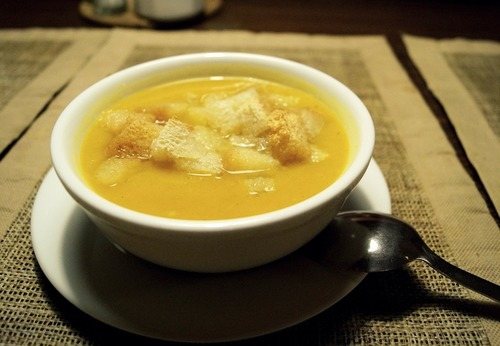
Let's summarize: pea soup is not at all dangerous for a woman during breastfeeding; on the contrary, it contains a huge number of beneficial properties. In order to preserve the full range of positive characteristics of pea soup, it is necessary to prepare it correctly.
It is not recommended to consume canned foods during lactation, because canning uses a lot of substances that cannot be called useful.
However, green peas during breastfeeding have many beneficial properties - strengthens the immune system, helps improve the functioning of many body systems. However, many are alarmed by the technology of canning peas, because it can use harmful chemicals, so maybe it’s better to abandon this product?
Provided that all preservation requirements for this product are met, almost all beneficial substances are retained in green peas. It contains proteins, carbohydrates, fiber, starch, as well as vitamins A, B, E, H, and a large number of valuable minerals (calcium, selenium, magnesium, potassium, zinc, chlorine and others).
Such a diverse vitamin and mineral composition ensures that green peas perform the following functions:
- Amino acids in green peas have properties that have a positive effect on lactation.
- Green peas have a valuable effect on the condition of the skin, improving its appearance and helping to eliminate its diseases.
- This product has antiviral properties, helping the body's immune defenses.
- Thanks to its balanced composition, it promotes the absorption of calcium, which is necessary for a woman during lactation and for a baby at the stage of its growth and development.
- Regular consumption of peas improves the condition and functioning of the nervous and endocrine systems.
- A pleasant feature of canned peas is the fact that they are useful both in their pure form and in various dishes. It can be added to salads, soups, side dishes, or eaten straight from the jar.
- Green peas are widely used in dietary nutrition. Due to its low calorie content (about 50 kcal / 100 g of product), it will become an assistant in the fight against excess weight of a young mother after childbirth.
Pea soup during lactation
Breastfeeding experts argue a lot about the benefits of this dish for women breastfeeding their babies. Most are convinced that this is not the best option for a meal. After all, after a serving of pea soup, you may suffer from heartburn and flatulence. And most importantly, the baby may also have a bloated tummy due to increased gas production.
Other experts say that every mother should try this dish and just take a closer look at the child’s reaction. It is quite possible that the child will not have any digestive problems. And yet, pediatricians do not advise women to eat pea soup until the baby reaches three months of age. By this time, his digestive system is extremely weak and very sensitive to all dangerous components of the mother’s diet. And peas are just one of them.
Before eating even a small portion of pea soup, you should first try to eat just boiled peas. However, its portion should not exceed a teaspoon. And if after eating it no changes in the baby’s behavior occur, his tummy is not bloated, he is calm, then the portion of boiled peas can be slightly increased. And only after this you can cook pea soup, adding very little peas to it. Be sure to cook it with carrots to avoid bloating.
The amount of pea soup when you first use it should be small. And it is better to use it in the first half of the day, which will allow you to evaluate the baby’s body’s reaction to this. Experts say that it may not appear immediately, but within two days. And if everything is fine with the baby, then it is recommended that mom eat this dish no more than twice a week. When preparing it, it is recommended to use not ordinary store-bought peas, but dried peas. This will reduce the likelihood of malfunctions in the children's intestines.
The later (preferably after 6 months of the baby’s life) during lactation a woman consumes pea soup, the less likely the baby will develop gas. After six months from the baby’s birthday, you can already cook a dish with the addition of regular peas.
During lactation, in order to prevent problems with the baby’s gastrointestinal tract, the mother needs to adhere to a gentle diet.
As a rule, such a diet involves giving up certain types of favorite foods, but many are interested: is pea porridge acceptable during this period while breastfeeding? Let's try once again to find out the pros and cons of introducing such a tasty and healthy, although very controversial, side dish into the diet of nursing mothers.
The diet for mothers during feeding is due to the fact that the digestive organs of babies are not fully developed, therefore babies may not produce certain enzymes necessary for digesting certain foods.
As soon as a dish enters the stomach that the baby’s gastrointestinal tract cannot handle, colic, pain, or indigestion may appear. To avoid such problems, mommy should monitor her diet.
What are the benefits and harms of pea porridge during breastfeeding and is it possible to have pea porridge while breastfeeding and when should a nursing mother start eating it?
Pea porridge is a very nutritious and satisfying dish that contains a large amount of vegetable protein. Protein of plant origin, in terms of its nutritional value, is practically in no way inferior to animal protein.
At the same time, peas have the same beneficial properties as other vegetables that are beneficial to humans:
- It contains a lot of fiber, which cleanses the body of toxins and waste. Quickly satiating, pea porridge helps cleanse the gastrointestinal tract of harmful substances.
- Potassium and sodium contained in legumes maintain water balance in the body. In addition, potassium prevents the development of cardiovascular diseases.
- Thanks to the phosphorus content, blood circulation in the brain improves.
- The selenium-iodine compound increases performance and helps cope with excessive mental and physical stress. Iodine has a positive effect on the endocrine system, taking care of the health of the thyroid gland, and selenium is known as a powerful antioxidant that fights free radicals and prevents the proliferation of cancer cells.
- Thanks to the iron contained in peas, a sufficient number of red blood cells are retained in the blood.
- Oxalic acid has a beneficial effect on the health of the urinary system.
- Tryptophan helps cope with various kinds of neuroses, which is especially useful for mothers and promotes the production of the hormone of happiness.
- Lysine is involved in the body's recovery processes and is an element that transports calcium to cells and tissues.
Pea porridge brings maximum benefits to both the baby’s body and the mother’s body. Its use enriches the diet with essential vitamins and microelements, which ensures smooth and uninterrupted operation of all body systems. All this happens due to the uniqueness of peas, which, even after heat treatment, retain the entire complex of useful substances.
What are the benefits of peas?
Peas are rich in nutrients:
- It contains a lot of lysine. Lysine has an anti-inflammatory effect. It increases the body's resistance to various viruses. In addition, thanks to lysine, normal absorption of calcium by the human body is ensured, which is very important for women in the postpartum period, as well as for their newborn babies.
- Peas contain cystine, which has a beneficial effect on lactation in women by stimulating the production of oxytocin.
- Peas are rich in vitamin B6, it takes part in the metabolism of amino acids. The lack of this vitamin affects a person’s skin: it becomes dry, dermatitis appears, spots on the lips, and bruises under the eyes. In children under one year old, with a lack of vitamin B6, cramps appear in the legs.
- Peas contain a lot of selenium, which improves immunity and improves overall human health.
- Peas, like other legumes, are high in protein. Its composition is similar to meat.
From all of the above, it is clear that all the beneficial substances contained in peas are simply necessary for the body of a mother who has just given birth and her child. But there are some points to consider.
In very rare cases, peas cause allergies. Therefore, its main drawback is different: after its use, increased gas formation and bloating are observed. In small children, these processes cause intestinal colic. For this reason, mothers who are breastfeeding should stop drinking pea soup immediately after giving birth.
When can you eat pea soup while breastfeeding? The legume ban doesn't last forever. At approximately 3 months of the baby's life, the mother can try pea soup. And, if the baby reacts normally, it can be introduced into regular use.
Some women claim that they ate pea soup before 2-3 months after giving birth, and at the same time their children calmly tolerated their introduction to this product. Everything is explained by the individual characteristics of each child separately. One child has a more developed enzyme system, while the other has a more sensitive and vulnerable body. The mother of a child who regularly suffers from colic is not recommended to eat pea soup until 3.5 - 4 months. It will be even better if she postpones this wonderful dish until the baby is 6 months old. And the mother of a healthy, calm baby can try introducing pea soup into her diet at 2 months.
Rules for introducing peas into mom’s menu:
- For the first time, try no more than 1 teaspoon of simply boiled peas (not pea soup) in the first half of the day.
- For 2 days, monitor your baby’s behavior: whether he has become restless, how he sleeps, whether he experiences pain in the tummy, whether he has constipation, etc. Any of the listed symptoms will indicate the need to give up peas until the baby is 6 months old. If there is no negative reaction, try boiled peas a couple more times over the course of a week, doubling the dose. Then you can eat simple pea soup.
- The dish must be prepared from dry cereals, because... fresh peas are less easily digested by the body.
- For the first time, do not cook concentrated soup; there should not be a lot of peas.
- Do not add smoked meats to the soup under any circumstances.
- If the baby reacts normally to a pea dish, then it can be consumed during breastfeeding 1-2 times a week.
- After six months of the baby’s life, fresh pea dishes can be introduced into the mother’s diet.
Harm of pea porridge for mother and baby during lactation
One of the disadvantages of eating pea porridge is that it can cause increased gas formation, but this does not threaten the child, and, as a rule, only affects the mother’s gastrointestinal tract. However, this only happens when the dish has been consumed in excessive quantities.
- If the mother has diseases such as gastritis and pancreatitis, it is best to avoid eating pea porridge so as not to worsen the course of the disease.
- When breastfeeding, it is strictly forbidden to eat porridge made from peas with mushrooms and fried onions.
Pea
Pea porridge during breastfeeding has a beneficial effect on the mother's body. This product cleanses the bloodstream of waste and toxins and improves intestinal function. Tryptophan contained in peas has a positive effect on a woman’s nervous system. However, in the early stages of breastfeeding, it is better to avoid this dish.
Peas are a provocateur of gas formation in any form. Even well-cooked and mashed porridge will have an effect on the baby. After eating this dish, night colic will be inevitable.

Features of preparing peas for mother during breastfeeding
The dish is prepared very simply and consists of several ingredients - peas, water and butter.
- The peas are placed on the stove to cook in the same water in which they were soaked.
- It is necessary to cook the legumes until they are completely softened and the peas cannot be crushed using a potato masher.
- Salt the dish to taste.
- Usually, according to the traditional recipe, butter is added to the porridge. Instead, you can add fried onions, stewed mushrooms, fried or boiled meat, but only if the porridge is intended for other family members, since during lactation it is better for a woman to refuse any additives to the main ingredient.
Pea porridge: how to correctly introduce it into the menu of a nursing mother
Contrary to popular belief that peas cause increased gas production and can cause colic in a baby, this is not the case.
The main prohibition in a mother’s diet during breastfeeding is all spicy, sour and fatty foods, therefore pea porridge, due to the fact that it has a neutral, mild taste, is quite acceptable in a diet while breastfeeding.
Of course, you shouldn’t immediately eat a portion of porridge; first you need to “introduce” the child’s stomach to a new dish.
The product must be introduced gradually, starting with one to two tablespoons.
If after three days the mother does not notice that the baby has a tummy ache, increased gas formation, or has problems with bowel movements, then you can continue to eat pea porridge, starting with 150 ml and gradually increasing to a whole portion. My mother should eat pea porridge no more than twice a week.
The ban on legumes applies only to canned peas, since harmful preservatives and food additives are added to increase their shelf life.
Sometimes peas can cause food allergies in infants, but this happens very rarely, so the baby’s reaction to the product must be carefully monitored.
A woman’s diet during breastfeeding should be as healthy and safe as possible for the baby, so many foods are excluded or limited in quantity.
The question of whether a nursing mother can eat pea soup is relevant, since the dish is quite popular and tasty. In addition, peas contain many beneficial components for the body.
Recipe for canning homemade green peas for a nursing mother
This recipe is the simplest, without adding all kinds of spices and flavor enhancers. It is most suitable for the breastfeeding period.
To make the canned product tasty and tender, you need to buy green peas in season, fresh, not overripe.
Required Ingredients
Green peas – 1 kg;
Water -1.5 l;
Salt – 4 tbsp;
Sugar – 4 tbsp.
Cooking process
- Bring water to a boil.
- Add salt and sugar there.
- Wash the green peas, peel them, sort them and pour them into the water.
- Cook for 20 minutes.
- Sterilize jars.
- Pour the peas into it and pour the marinade over it.
- Store in a dark, cool place.
Green peas during breastfeeding can only be beneficial if the preservation technology is correctly followed, in which chemical preservatives and flavor enhancers are not used. You should purchase such a product only from well-known manufacturers or prepare it yourself.
In the first two months of a baby’s life, his digestive system is just adapting to new living conditions. During this period, the nursing mother is advised to adhere to a strict diet so as not to cause unnecessary inconvenience to the child due to indigestion or allergies.
In the future, expanding the list of permitted products, many young mothers bypass dishes made from legumes, which include peas. It is believed that eating peas causes increased gas formation, and therefore the baby will have a tummy ache. But is it?
Peas contain a large amount of plant proteins, which are broken down into amino acids in the human body. The main part of the amino acids is spent on the needs of the body, participating in vital processes, and some form a specific protein that is not absorbed by the body. This protein, passing through the intestines, partially disintegrates, which causes increased gas formation and associated discomfort.
Since this specific protein cannot enter or form in mother's milk, the baby is not at risk of digestive problems caused by the mother's consumption of peas. He will receive only useful substances. Allergic manifestations are possible, as with any other product.
